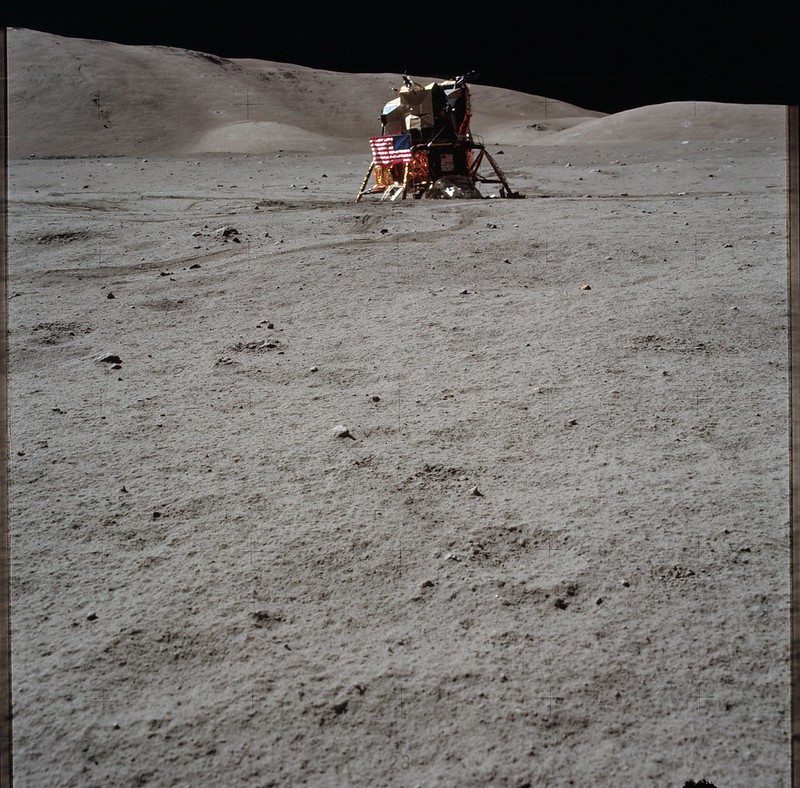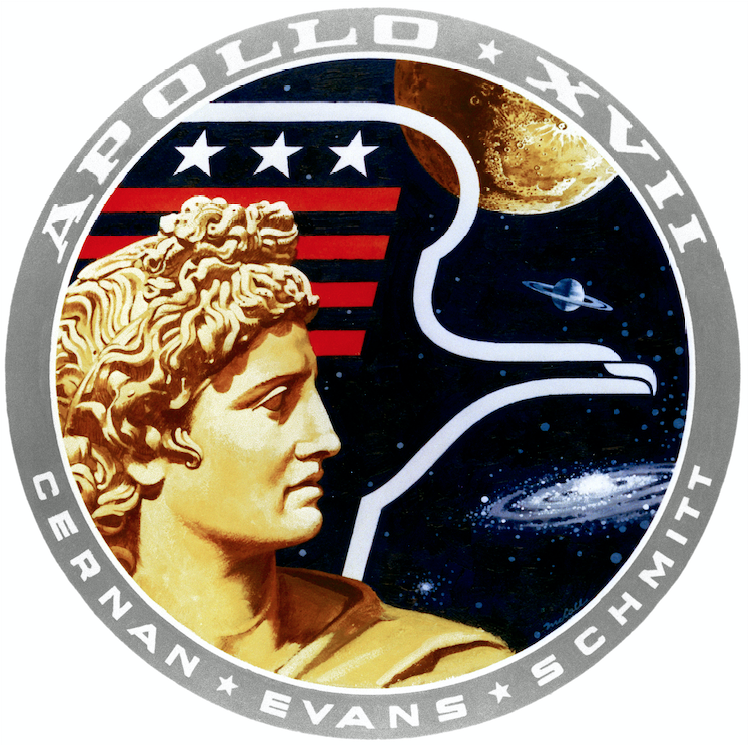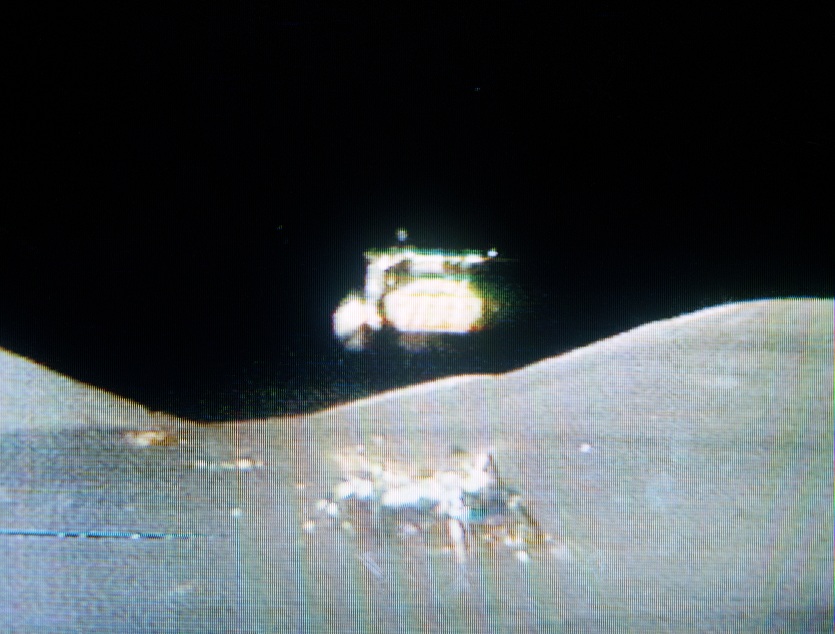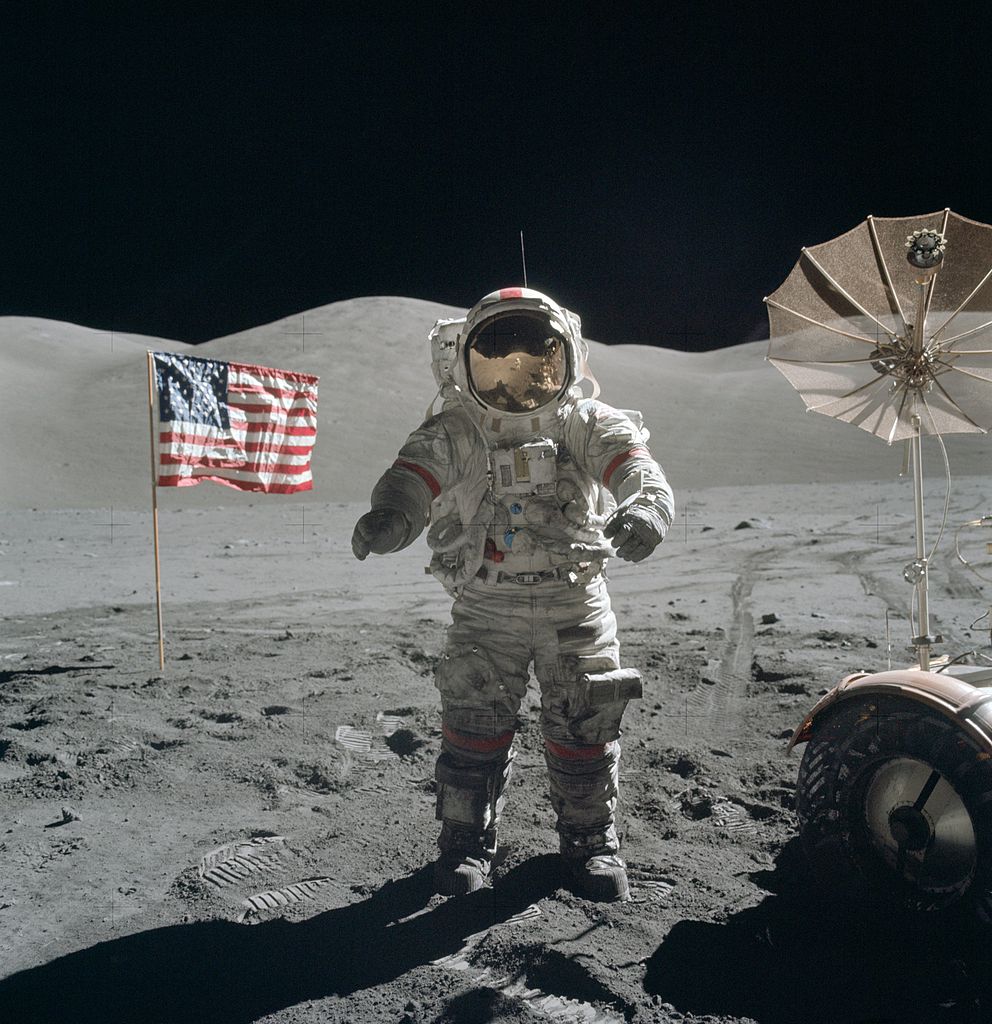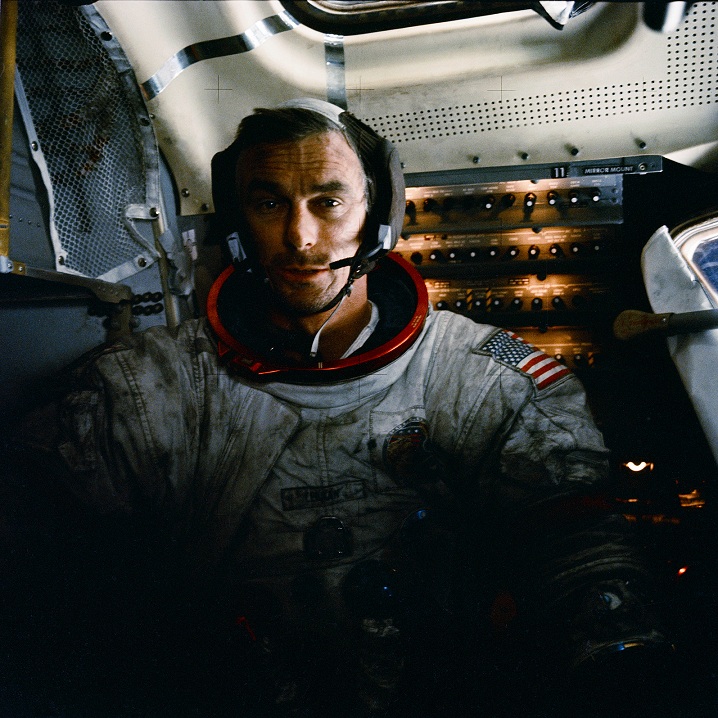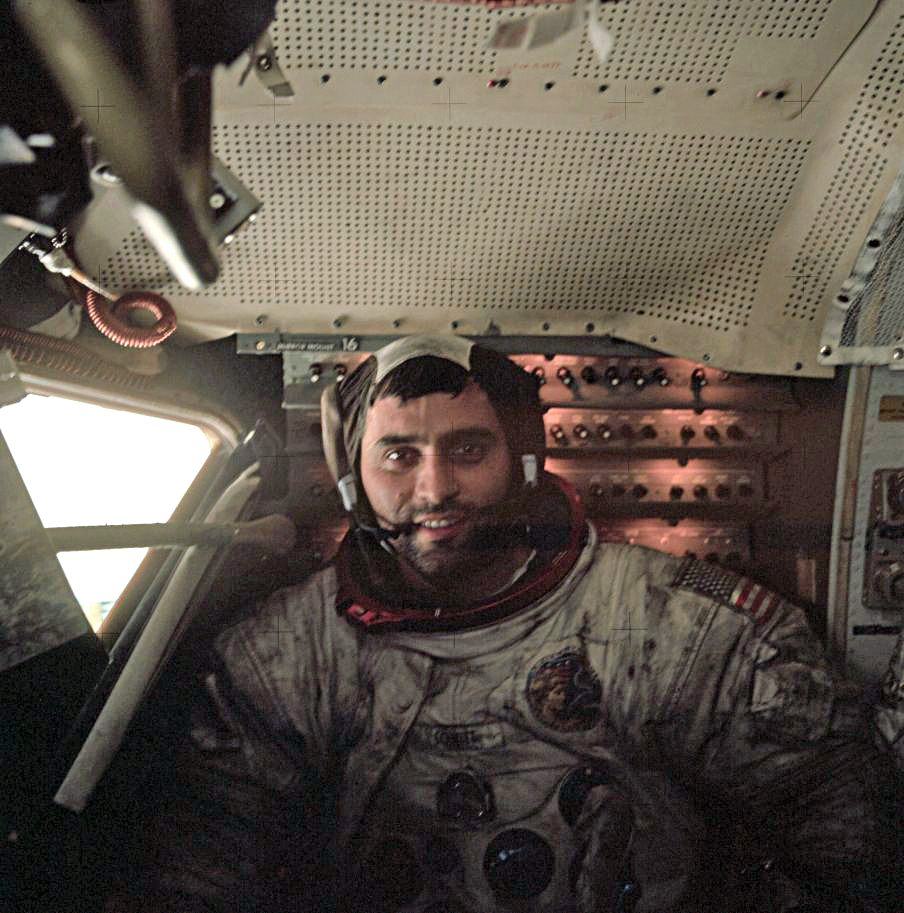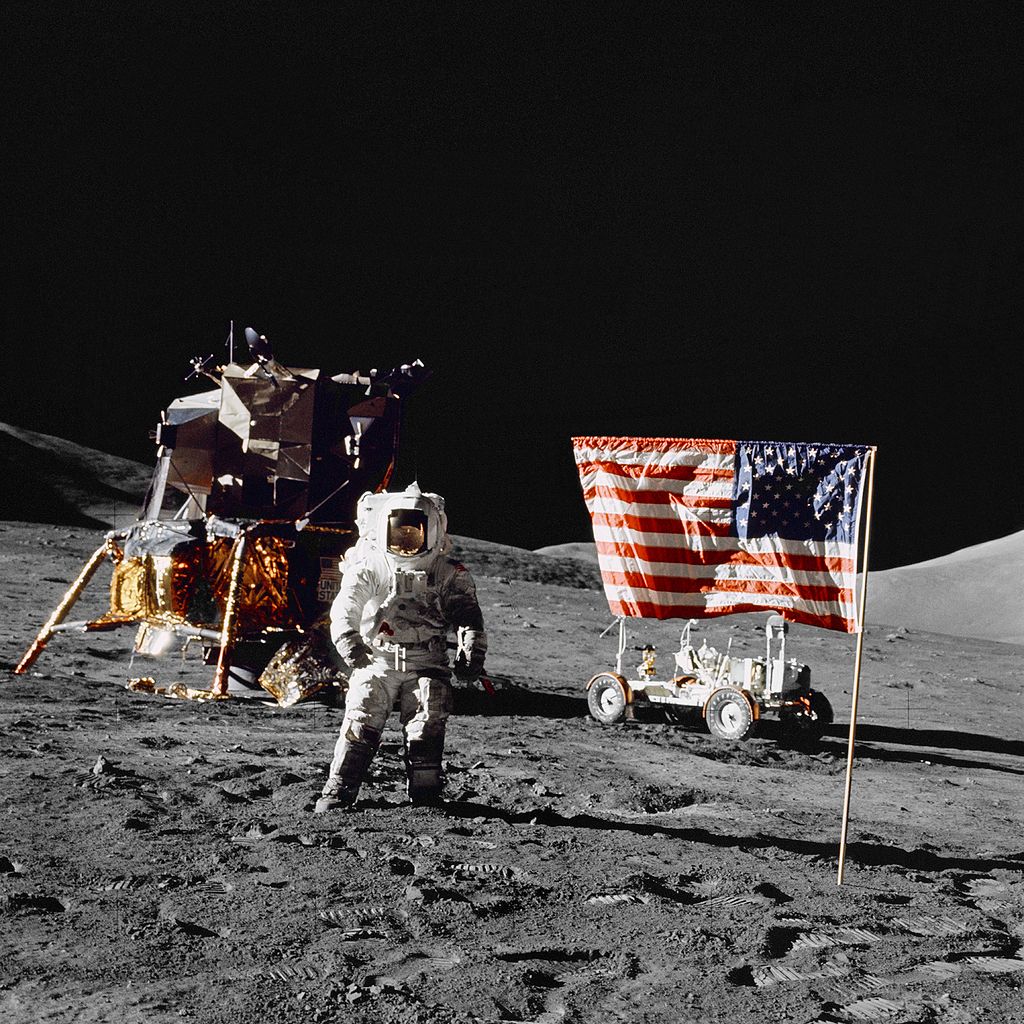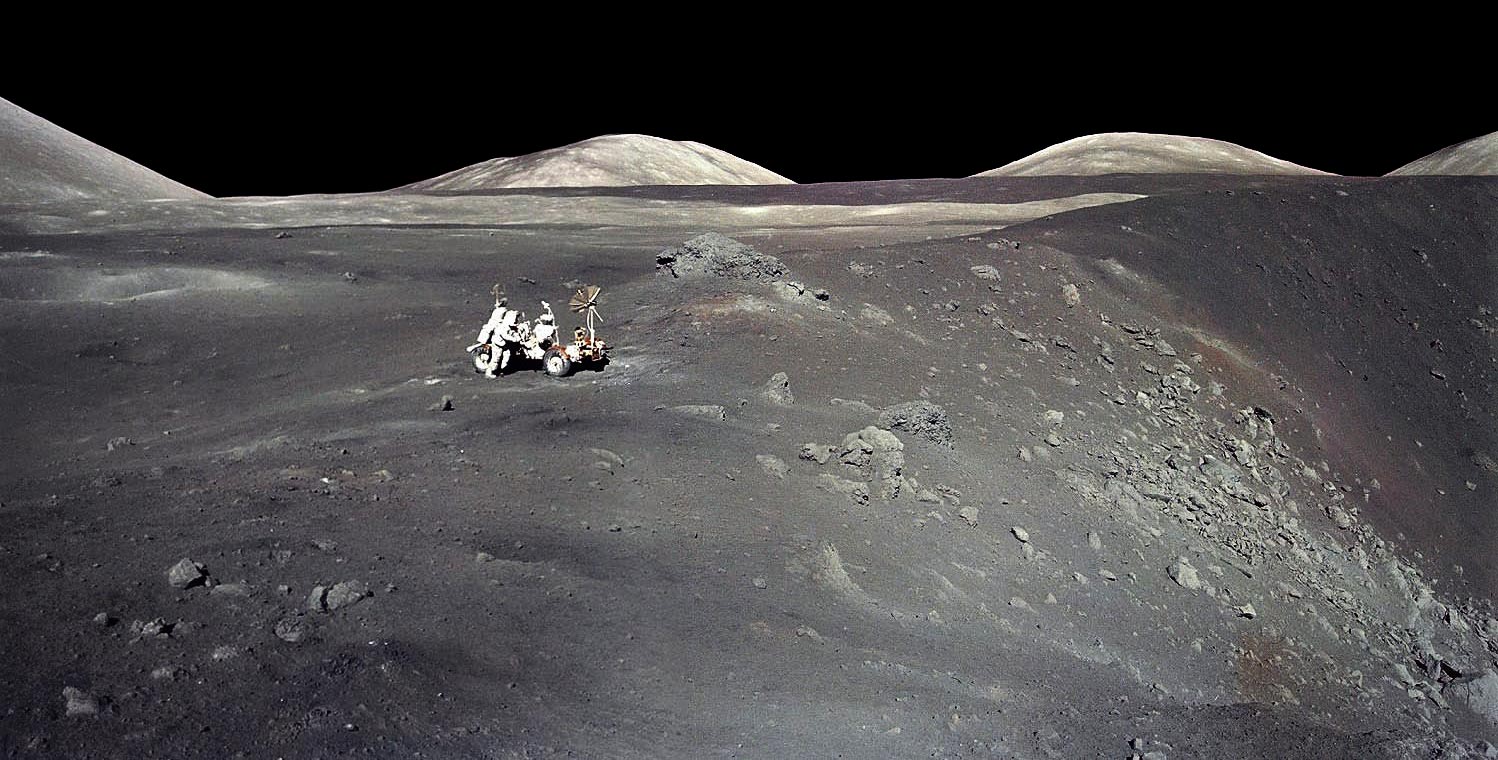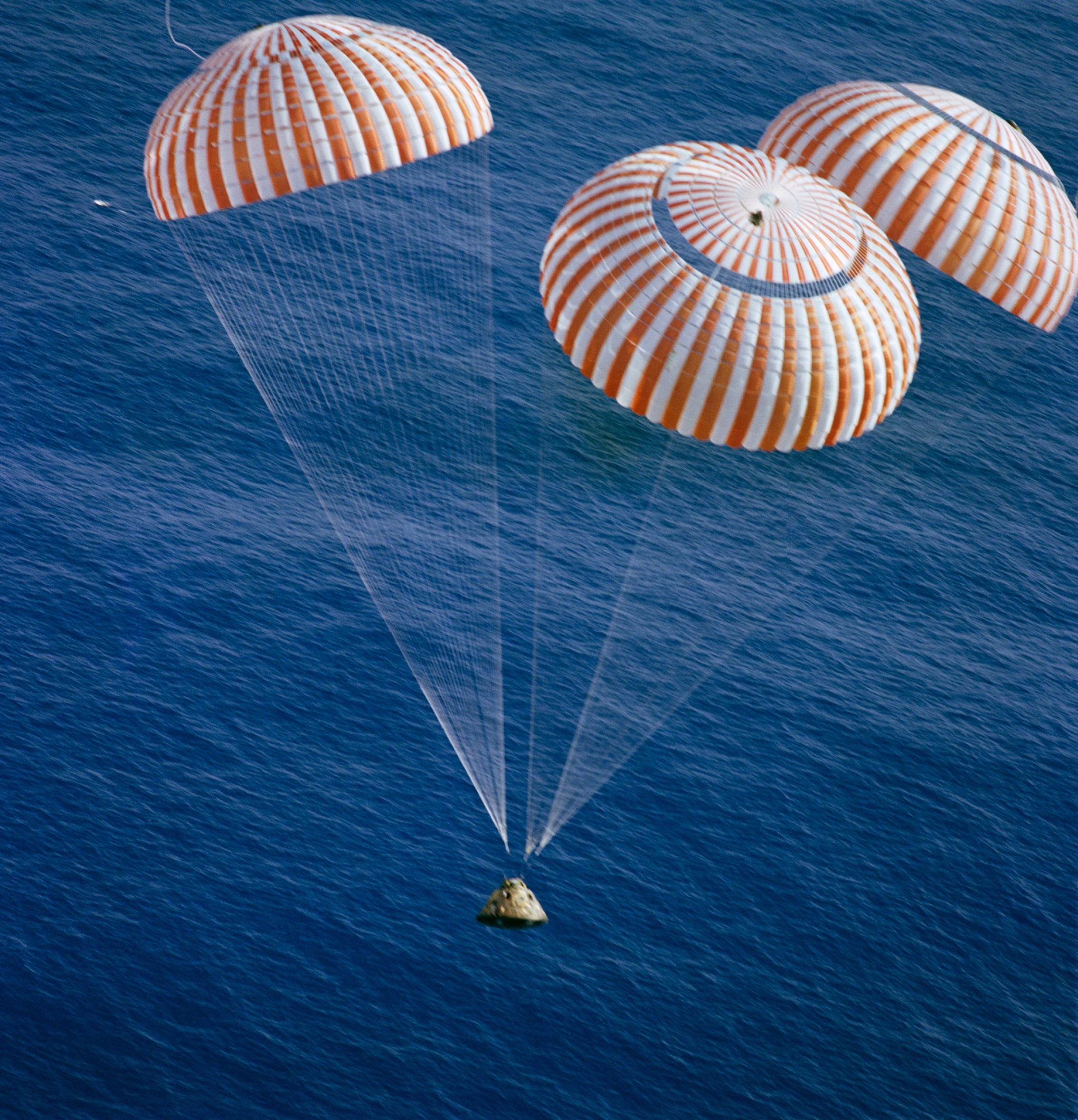
19 December 1972: At 2:25 p.m. EST—12 days, 13 hours, 51 minutes, 59 seconds after departing the Kennedy Space Center at Cape Canaveral, Florida—the Apollo 17 command module America (CM-112) returned to Earth, splashing down in the South Pacific Ocean, approximately 350 miles (563 kilometers) southeast of Samoa. The three 83 foot, 6 inch diameter (25.451 meters) ring sail main parachutes had deployed at an altitude of 10,500 feet (3,200 meters) and slowed the capsule to 22 miles per hour (35.4 kilometers per hour) before it hit the ocean’s surface.
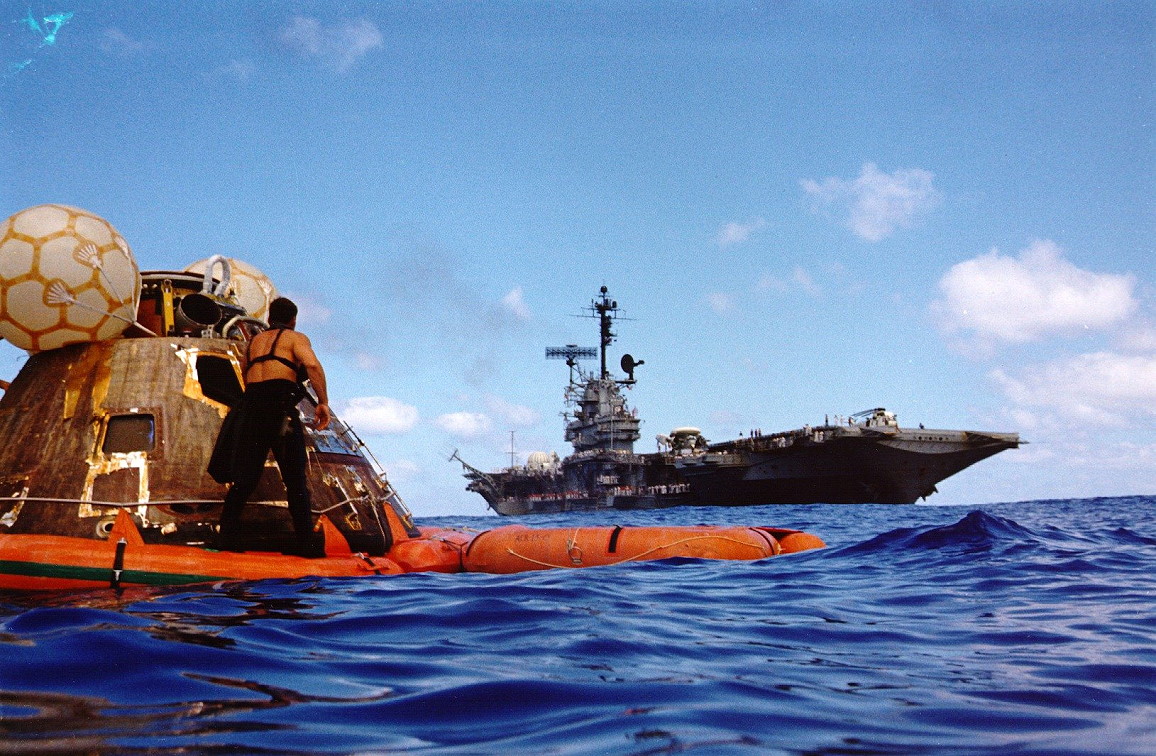
The landing had a high degree of accuracy, coming within 4.0 miles (6.44 kilometers) of the recovery ship, the aircraft carrier USS Ticonderoga (CVS-14).
The flight crew was picked up by a Sikorsky SH-3G Sea King helicopter, Bu. No. 149930, of HC-1, and transported to Ticonderoga. The three astronauts, Eugene A. Cernan, Ronald A. Evans and Harrison H. Schmitt, stepped aboard the aircraft carrier 52 minutes after splashdown.
The splashdown of Apollo 17 brought to an end the era of manned exploration of the Moon which had begun just 3 years, 3 days, 5 hours, 52 minutes, 59 seconds earlier with the launch of Apollo 11.
Only 12 men have set foot on The Moon. In 49 years, no human has returned.
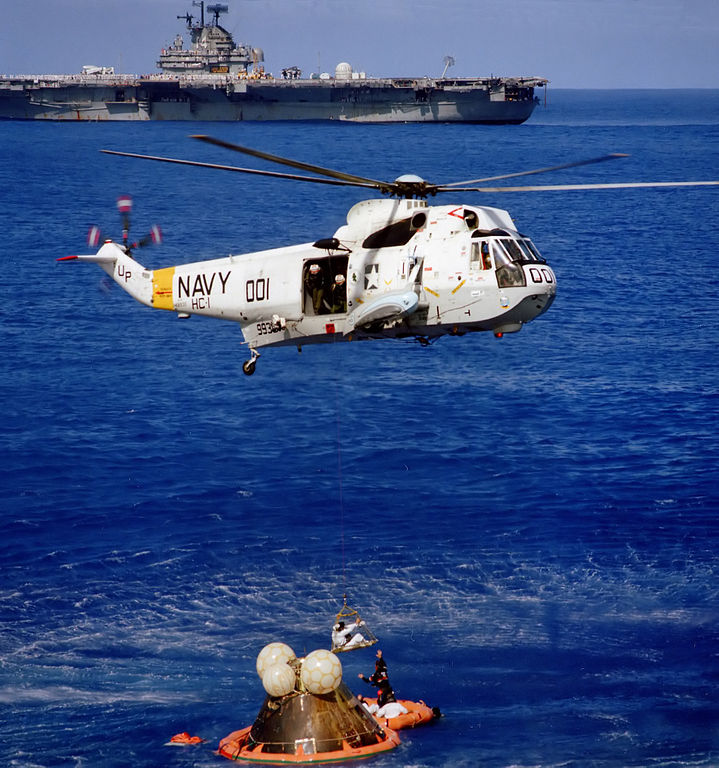
© 2015, Bryan R. Swopes
